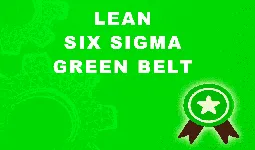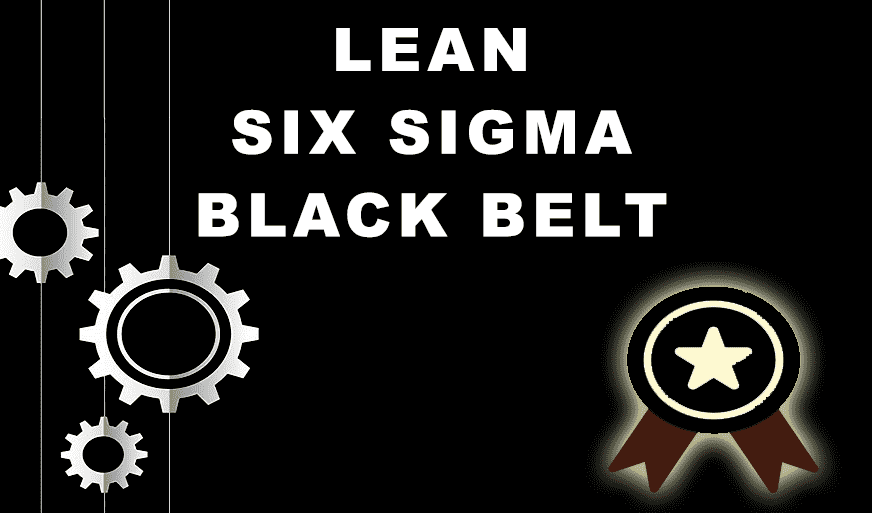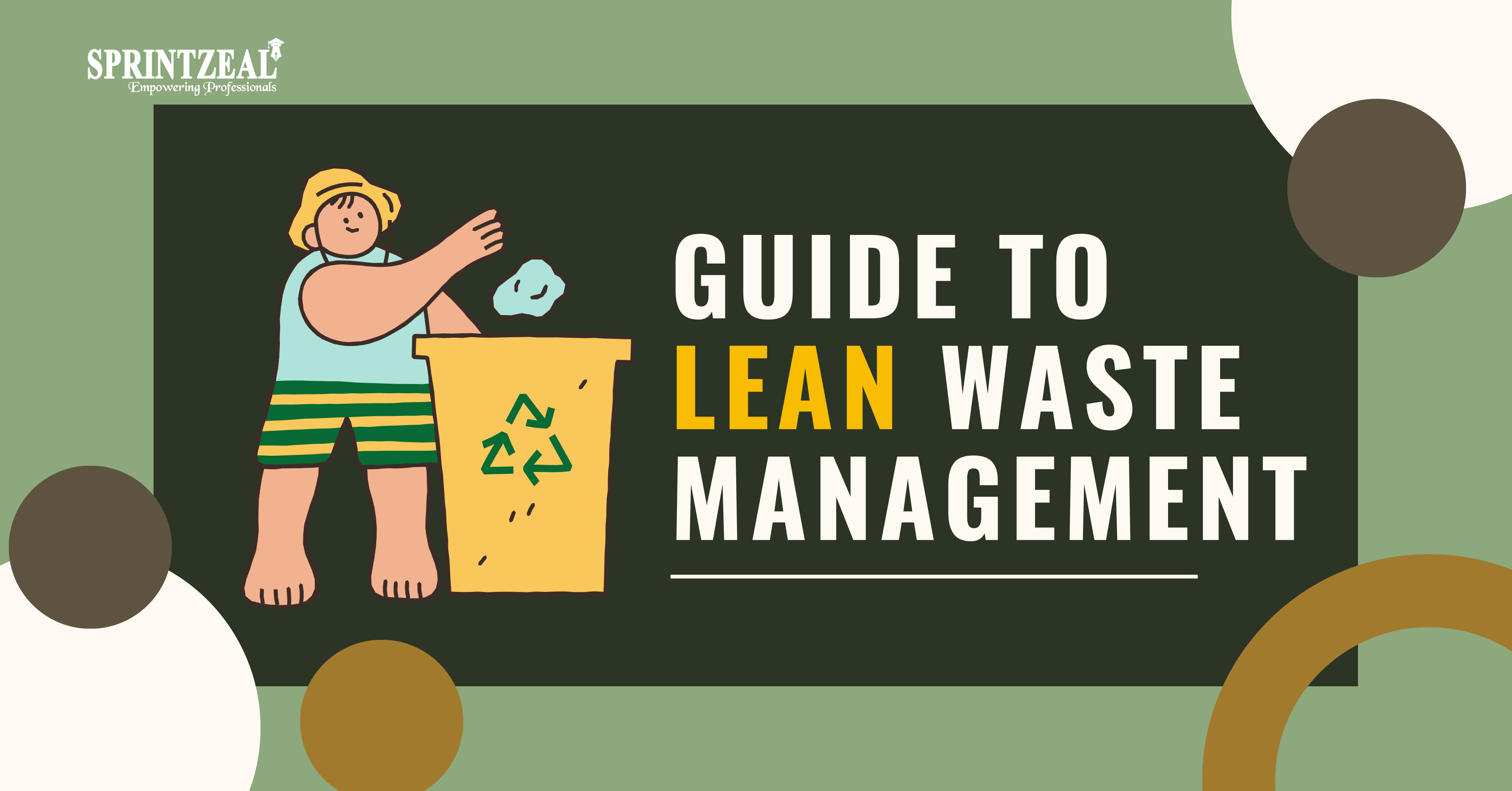Quality Manager Interview Questions and Answers for 2025
-
 By Nchumbeni Yanthan
By Nchumbeni Yanthan - Published on Feb 10 2025

Table of Contents
- Most Commonly Asked Quality Manager Interview Questions for 2025
- What is the Role of a Quality Manager?
- Responsibilities of a Quality Manager
- Top Quality Manager Interview Questions
- Intermediate-Level Quality Manager Interview Questions and Answers
- Advanced-Level Quality Manager Interview Questions and Answers
- Scenario-Based Questions and Answers
- How to Become a Quality Manager?
- Conclusion
- Frequently Asked Questions
Most Commonly Asked Quality Manager Interview Questions for 2025
A thorough understanding of quality assurance and control is necessary before beginning a career as a quality manager. The need for skilled, quality top managers will persist even as the professional landscape changes in 2025. In addition to having a strong skill set, contenders in this field must also be able to perform well in quality manager interview questions.
The key to success in these interviews is the ability to respond intelligently to the most common quality manager interview questions. Understanding these interview questions is crucial, whether you are a skilled quality management professional looking for career advancement or an aspirant entering this field.
This blog acts as a thorough manual, simply stating the essential quality manager interview questions interviewers are likely to ask in 2025. We aim to provide you with useful information and methods for coming up with well-reasoned responses. Let's start looking into how we can become a reputable Quality Manager by 2025.
What is the Role of a Quality Manager?
Whatever a product may be, irrespective of its genre, size, or shape, the main thing manufacturers should put effort into is maintaining the quality of their product through quality control.
Assuring and maintaining the quality of any product is a tough job to carry on. This is where a quality manager is required. Every organization that is involved in manufacturing some sort of product or service hires a Quality Manager. And is over for quality, the manager is to assist.
Guidance suggests various types of methods to maintain the quality of any product. A Quality Manager has to pay attention to a product from its inception till it is delivered to the end customers.
Responsibilities of a Quality Manager
A Quality Manager is required in every type of industry and organization undoubtedly. There’s no such organization that condemns denying the importance of quality management and quality control in their organization.
A Quality Manager Job is not only fixed to certain manufacturing industries. However, they are required in various industries, starting from the healthcare industry to the automobile industry.
Quality Managers play vital roles in every type of industry, by helping to understand the product's quality control. Their role may depend upon the type of industry they work within. But, there are specific and certain roles they have to play similar in every type of industry. Some of the basic responsibilities of an organization are:
- They have to put forward better quality standards, procedures, and specifications in order to maintain the quality of manufacturing.
- They have to review the end of consumer demands while managing the quality of the product and quality control.
- They will have to work hand in hand with the vendors to maintain the quality of any product at the time of delivery.
- They are not only responsible for establishing quality for the product and controlling it, but they are also responsible for establishing the quality of health and safety while working.
- They’re responsible for explaining each and every procedure of quality management to their staff.
- They have to face all types of challenges that may arise while managing the quality of any product.
- They have to manage resources while managing the quality of any product.
- While working with waste, they are responsible for reducing wastage and increasing efficiency.
- They have to keep track of each quality management procedure by reviewing and gathering data and statistical reports.
- They have to check each and every area of work and have to work on the weak areas and recommend some better plans to improve the weak areas of quality management.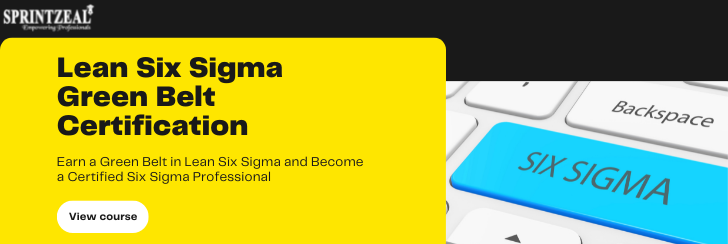
Top Quality Manager Interview Questions
Here are the lists of top Quality Manager Interview questions and answers,
1) Describe your management style as a Quality Manager.
As a Quality Manager, a person has to work effectively in order to develop a team as a whole. As a Quality Manager, an individual should never think with ego. It is the major responsibility of a Quality Manager to develop a team individually. And a Quality Manager should never look at any of their team members on the basis of inferiority.
The Quality Manager, being a leader of a quality management team, should never compare any team member with another team member by any means. Quality managers should always behave like good leaders.
They should participate in various processes and activities with their team members to make them feel comfortable enough to work in any type of environment. Last but not least, a Quality Manager should always pay attention to the feedback he or she gets from their team members.
2) What are the duties of a Quality Manager?
A quality manager is a professional who is involved in inspecting a product from its inception till its delivery by maintaining its quality control. They have two strategies and different types of processes that can be used to develop the quality of an imperative sufficiently. They must know how to sustain their resources while managing the quality of any product.
They have to review each and every process that is going to be involved in managing quality, this means it helps in a better understanding of quality control.
They have to clearly explain the need for quality management to their teams. They must keep their eyes open while managing the quality of any product, this is how quality control is managed.
They should keep into account each and every process that is involved in managing the quality of the product. They should always stay prepared for the changes in the request that may arise from the stakeholder's end.
Is Your Quality Manager Salary Competitive? See how you measure up and take steps to earn more.
3) What should be the daily routine of a Quality Manager?
The daily routine of a quality manager should include tasks like:
- Inspecting the final product.
- Meeting all the legal standards.
- Meeting the demands of the stakeholders.
Apart from these three attacks, a political manager should always pay attention to every detail in the quality of a product. By doing all these tasks and responsibilities in the daily routine, a quality manager can easily handle the pressure from the stakeholders, higher authorities, and competitors.
The major motive of a quality manager should be to save the reputation of their organization by quality control and quality management.
Further, they should also consider conducting quality auditing to check the integrity of the production process and quality process.
4) How does it Quality Manager measures his success?
The measures that a Quality Manager should take to calculate his success are:
- He should put effort into meeting the demands of the employees. And he should also pay attention to employee satisfaction.
- He should always look forward to improving the levels of standards of service provision and Product deliverance.
- He should aim and work to gain the given target.
- You should always consider completing any quality awareness workshop successfully.
- Ultimately, here are two who work hard enough to develop their employees individually to meet the required demands of their customers.

5) What is the greatest strength of a Quality Manager?
The greatest strength of a quality manager should be:
- Quick problem-solving capacity.
- Critical thinking.
- Being unbiased with every member of their team.
- Being loyal to the team as well as their organization.
- They should possess the ability to motivate their team members during tough times.
- They should be able to conduct ISO-based processes in their organization.
- They should possess a positive attitude; they should never feed their ego for any reason.
6) How would you explain the Project Quality Management process, according to PMBOK?
The Quality management process is comprised of various quality standards In accordance with the PMBOK. These standards can guide any quality manager to easily deliver any project and product. It also guides a quality manager with steps to efficiently meet the compliance of any project.
The Project Quality Management process of PMBOK includes 3 main processes, and those are:
- Quality planning
- Quality assurance
- Quality control
The process of quality planning comes along with quality metrics. The process of quality assurance deals with the analysis and continual development of production processes and project processes.
In contrast, quality control is a process that is implemented in order to control the quality metrics. While working with these three processes, a Project Manager works hand in hand with a Quality Manager.
And, they basically aim to procure all the project and business-related goals while delivering the required product for the outcome.
7) Explain the reasons that bring results in Quality Management.
A quality Manager is able to bring any result to life by following certain motives or objectives. To bring inefficient results, a Quality Manager should make sure that everything is done according to a set plan. They should pay attention to each step or process that is carried out while developing any product. Further, they should also make sure that:
- The planned goals are met successfully.
- All the initiatives are procured.
- And the estimated standards that were projected by their enterprise are gained. By completing the abovementioned objectives only, a Quality Manager can bring in the result.
8) What should the employer expect from his quality manager after the first three months of employment?
A Quality Manager should meet all their commitments within the three months of their employment. They should prove their ability to their employers by working hard enough to maintain the integrity of the goals and vision of the company.
They should be loyal and reliable enough for their organization to push envelopes of the Quality Department.
9) Distinguish between ISO and CMM.
ISO can be defined as a method of communicating any process. ISO procedures can define certain developments of any product. But, the ISO procedures are incapable of defining the quality of various designs. For example, a set of software programs cannot bring versatile quality, and rather they may bring in a similar quality to any product.
On the other hand, CMM can be defined as a method of communicating capabilities. The procedure of CMM allows a Quality Manager to maintain the quality of any product.

10) Define the benefits of a Quality Management System for an organization.
By following a Quality Management System and effectively implementing the same, an organization can enjoy various benefits.
For instance, achieving the ISO 9001 Certification implies that an organization is providing its customers with good quality products and services. Some other benefits of following a Quality Management system are:
- It helps an organization to increase its efficiency to develop any product, and it allows an organization to waste fewer resources.
- By implementing a Quality Management System, an organization can stay consistent in the market while they will also be able to manage and control bigger business processes.
- It helps an organization to manage various types of risks effectively.
- Quality Management System allows an organization to reduce or minimalize the hazards of costly errors.
- It allows an organization to extend its range of using the market overseas.
- By implementing the Quality Management System, an organization can expect better internal communication.
11) How is formal documentation important in Quality Management?
By creating formal documentation, a quality manager can easily keep track of every process involved in the Quality development of a product and help in the quality management system.
They can also provide this documentation to their higher authorities and stakeholders for a better understanding of the quality management system. At current, the stats of Quality development. The major benefits of formal documentation are:
- It increases the scope of accountability.
- It describes the procurement of any process involved in the quality management system.
- It allows an organization and Quality Manager to stay consistent with the result.
- It allows an organization and Quality Manager to keep track of the deadline.
- It enhances the scope of communication within an organization and quality management system teams.
- It provides an organization with well-maintained records.
12) How would you use data to improve any process and product?
To answer this question, a Quality Manager should possess the best data analytical skills. And he or she should demonstrate their analytical skills using data in front of their employers.
13) Briefly describe the role of a Quality Manager in any organization.
Quality Manager plays a very important role in managing the quality of their product and quality control of the product. They act as a catalyst for change in the organization. They not only create a better channel of communication when it comes to change.
They also play a vital role in handling the relationship of their organization with stakeholders. And they do so by maintaining the integrity of the product cycle.
At the same time, managing and monitoring the quality while managing and monitoring the quality of any product.
14) Tell us about the contents of test plans and test cases.
There are several contents of test plans and test cases that allow a Quality Manager to test various aspects of any project. By testing various aspects of any project, a Quality Manager can easily understand the requirements and the weaknesses. The following contents of test plans and test cases are:
- Objective testing
- Scope testing
- Frame testing
- Testing the environment
- Testing the reason for the development
- Testing the criteria for entering and exiting any process
- Testing the deliverables.
- Testing the factors of risks that may arise while running the quality development cycle.
15) Define the test case.
A test case can be redefined as a certain condition. In this condition, checking against the Application under Test is carried out. It comprises information like test steps, prerequisites, changes in demands test environments, and other such outputs.
16) Describe the strategy for the automation test plan.
The strategy for the automation test plan is described as:
- The strategy that is required does initiate Automation Test Plan
- Preparation of suitable conditions for the Automation Test Plan
- Registering the scenario
- Working with the Error handler incorporation
- Enhancement of script by inserting various checkpoints and looping constructs.
- Carrying out required measures to debug the script and resolve the prevailing issues.
- Restarting the procedure of running scripts.
- Reporting the outcomes.
17) How would you explain a Quality Audit?
There are various procedures that are carried out in an organization to check the quality of an end product. However, a quality manager regularly checks each step efficiently to reduce the scope of quality-related faults.
But, even after running a number of obligatory quality inspections, there are chances that the quality of the end product may get hampered. This is the reason why it is important to carry out a Quality Audit. Generally, Quality Audit can be defined as a systematic way to determine the efficacy of quality.
It allows a Quality Manager to investigate the Quality Control procedures that are carried out to maintain and enhance the quality of a product.
18) Explain how states make the transition from Discovery to Action.
The discovery process is a process that is used to produce basic information. Such information can provide a Quality Manager with a decision and various points of action that can be used to enhance the quality of the product.
The Discovery process is more focused on the ways to bring in a set of robust methods. And those methods can be used as a foundation to create an efficient Quality Management System.
To move from the state of Discovery to Action, one has to move away from producing accurate data. And, they should focus more on presenting a set of actionable information that needs several techniques and tools.
19) How would you differentiate between Product Quality and Process Quality?
Product Quality can be defined as a condition where the Quality Manager focuses more on finalizing the quality of a product. Whereas a Product Process can be defined as a procedure of setting required perimeters to manage the process involved in managing the quality of a product and its quality management system.
20) Tell us about quality principles.
In general, there are eight quality principles, and those are:
Eight Quality Principles in Quality Management
- Focus on customers.
- Aspect of leadership.
- People involved in quality development.
- Defining the approach of a process.
- Understanding the system of approach to managing the quality of a product.
- Incorporating required efforts to improve continually.
- Learning about the factual approach to making any decision.
- Understanding the mutual benefits of creating relationships with a supplier.
21) What is the risk? How can risks be avoided?
In the field of quality management, risks can be defined as any defect, fault, or failure in achieving the projected quality of a product. It can also be defined as a situation that disturbs the developmental phase of a process.
However, a Quality Manager is a trained professional who is equipped with skills that can be used to detect and avoid any type of risk. A Quality Manager can avoid risk by applying different types of risk matrix in any process.
The risk matrix is capable enough to show the possible risks in a process. It also allows a Quality Manager to control such risks by identifying and reducing those risks. It also allows a Quality Manager to learn about the presence of risks in different segments of a process.
For instance, when a number of team members decide to leave amid the quality development phase. Then such type of instance can be called risk. So, to avoid such risk, a Quality Manager should sign a bond or contract with their team members for a particular time period.
22) How do you resolve conflicts within your team?
I believe in addressing conflicts swiftly and impartially. My approach involves actively listening to each team member's perspective, analyzing the situation without bias, and facilitating a solution that fosters collaboration while supporting.
23) As a Quality Manager, how would you classify your management style?
A key component of my management approach is developing a culture of ongoing progress. In order to ensure adherence to organizational goals and industry standards, I put a high priority on open communication, defining measureable quality goals, and allowing the team to take the right steps.
Intermediate-Level Quality Manager Interview Questions and Answers
24) How do you identify and prioritize key areas for process improvement?
I review historical quality reports and customer complaints to spot recurring issues. For example, at a previous company, production delays were traced back to inconsistent machine calibrations. By scheduling regular maintenance, we resolved the bottleneck.
25) What are your methods for assessing the quality of goods or services, and why?
I use tools like Fishbone Diagrams for root cause assessment to recognise flaws and Statistical Process Control (SPC) to verify process stability. These methods have helped me address production failures early.
26) How do you ensure quality consistency across different production batches?
I standardize production processes and conduct in-process quality checks. At my previous company, introducing a mid-production quality check reduced rework significantly.
27) Describe your approach to setting up quality control checks.
I identify key control points within the production process and establish visual and automated inspections. One such setup in a packaging line caught minor defects before final sealing, preventing delivery delays.
28) How do you mentor junior team members to ensure their understanding of quality management best practices?
I involve them in practical audits, provide hands-on training on inspection tools, and encourage learning through case studies.
Advanced-Level Quality Manager Interview Questions and Answers
29) How do you align quality goals with the company's long-term strategy and business objectives?
Aligning quality goals requires a deep understanding of the organization's strategic vision. I prioritize initiatives that impact customer satisfaction, cost reduction, and process efficiency. For example, while working at a manufacturing company, I introduced lean management practices that reduced waste by 15% and enhanced production efficiency by aligning KPIs with overall business objectives.
Key points for success:
- Conduct stakeholder meetings to align expectations
- Implement dashboards to track quality KPIs alongside business goals
- Regularly review alignment to adjust priorities as business conditions evolve
30) How do you manage quality standards while scaling operations?
Scaling operations demands standardized processes and robust monitoring systems. I implement advanced automation tools for data capture and real-time analytics to monitor quality at scale. For instance, during a factory expansion, I adopted machine learning-based predictive maintenance to minimize breakdowns, maintaining product consistency across facilities.
Tips for effective scaling:
- Develop a centralized quality management system (QMS)
- Automate critical inspection points
- Maintain training programs to ensure workforce readiness
31) Share your approach to implementing ISO 9001 or other industry-specific standards in a dynamic organization.
I start with a gap analysis to identify non-conformities, followed by creating a step-by-step implementation plan. I ensure that the workforce understands compliance requirements through tailored training programs. In a previous role, implementing ISO 9001 reduced defect rates by 20% and improved overall operational transparency.
Implementation steps:
- Conduct initial audits to assess readiness
- Document processes in alignment with ISO standards
- Involve cross-functional teams to promote a culture of quality
- Regularly monitor and review for continuous improvement
32) What steps do you take to measure the financial impact of quality improvements?
I track defect costs, warranty claims, and customer returns. One initiative involved switching to higher-grade materials, reducing warranty claims by a noticeable margin and improving brand reputation.
33) How do you handle the risks involved in launching a new product?
I operate stress tests on production processes and Failure Mode and Effects Analyses (FMEAs). In one case, we prevented a costly launch failure by detecting potential material instability in early trials.
34) Describe a significant challenge in maintaining compliance with changing regulations.
When environmental regulations tightened for a manufacturing client, I led a team to redesign waste disposal processes, ensuring compliance without production delays.
Scenario-Based Questions and Answers
35) A key supplier has delivered defective raw materials, delaying production. How would you resolve this while maintaining product quality?
I would assess the defect's impact and communicate with the supplier for immediate corrective action. At one point, we worked with a secondary supplier to keep production on schedule while negotiating a long-term improvement plan with the original supplier.
36) During an external audit, a major non-conformance is identified. How do you handle the situation and ensure future compliance?
I document the non-conformance and implement corrective actions with a priority timeline. In one instance, we revised a calibration schedule that the auditor flagged as inadequate and passed the follow-up audit successfully.
37) Your team consistently misses quality KPIs. How would you address this issue?
I investigate the root cause by reviewing processes and workloads. By redistributing tasks and offering training on inspection procedures, the team significantly improved KPI adherence.
38) A customer has lodged repeated complaints about product defects. What steps do you take to address and prevent future complaints?
I work closely with the production and customer service teams to investigate the root cause. In one situation, adding a pre-shipment quality check resolved the problem and regained customer trust.
39) Upper management is pushing for faster production, but it may compromise quality. How do you manage this conflict?
I present data showing the long-term cost of rework and returns. By implementing lean workflow adjustments, we were able to meet deadlines without compromising quality.
40) A competitor launches a similar product with better quality features at a lower cost. How would you respond as a Quality Manager?
In this situation, staying competitive requires a strategic approach that balances cost efficiency with quality improvement.
Steps I took in a similar case:
- Conducted a benchmarking analysis to identify the quality and feature gaps compared to the competitor
- Partnered with R&D to enhance product features while maintaining cost efficiency
- Streamlined production processes through lean manufacturing techniques, reducing waste by 18%
- Engaged with suppliers to negotiate better pricing on raw materials
- Communicated the value of our enhanced product through marketing campaigns
How to Become a Quality Manager?
To become a Quality Manager, follow these steps:
Education: Obtain a bachelor's degree in a related field such as business, engineering, or quality management.
Certification: Pursue certifications like Lean Six Sigma Green Belt, Lean Six Sigma Black Belt, Six Sigma Green Belt, Six Sigma Yellow Belt, from Sprintzeal to enhance your skills and credentials. Sprintzeal, are an Accredited Training Partner of the International Association for Six Sigma Certifications (IASSC).
Work Experience: Gain relevant work experience in quality control or assurance roles to build expertise.
Leadership Skills: Develop strong leadership and communication skills to manage teams effectively.
Continuous Learning: Stay updated with industry trends and best practices through Sprintzeal's training programs to excel as a Quality Manager.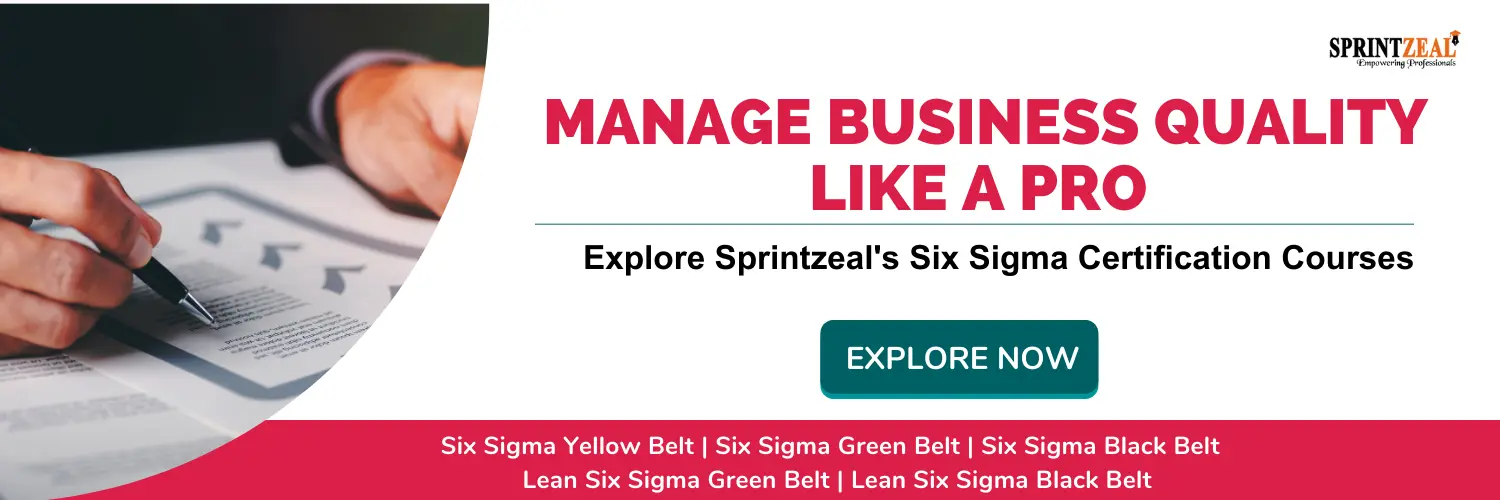 Get Quality Manager Interview Questions Ready! Top questions and smart answers for Senior Quality Manager.
Get Quality Manager Interview Questions Ready! Top questions and smart answers for Senior Quality Manager.
Conclusion
So, these were some of the questions for quality manager interview, which can be helpful for an aspiring Quality Manager to crack their interview easily. However, the job of Quality Manager is described as one of the toughest jobs in the field of product development.
To manage the quality of various types of products, a Quality Manager should be experienced enough.
Further, one should keep in mind that before preparing for the interview questions and answers for a quality manager, they should consider achieving some experience in Quality Management systems. Gaining experience will help an individual to answer all the Quality Manager Interview Questions from every aspect.
To know about Six Sigma certifications and to find the Six Sigma course that fits your career goals, chat with our course expert. Subscribe to our latest newsletters, free ebooks and have your jobs crack with the Q&A rounds.
Frequently Asked Questions
How do I prepare for a Quality Manager interview?
Prepare for Quality Manager Interview Questions by researching the company, reviewing quality management principles, and having examples of your quality improvement initiatives ready.
Why should we hire you as Quality Manager?
I bring a proven track record of improving quality, strong leadership skills, and a commitment to driving continuous improvement in processes and products.
What are the strengths of a Quality Manager?
Strong problem-solving abilities, attention to detail, effective communication, leadership skills, and a commitment to quality excellence.
What is the role of a quality manager?
A quality manager performs audits and improves the collection of features, services and goods assurances that fulfill quality standards.
What is the greatest strength of a quality manager?
Their skill is to guarantee output, address disputes, and promote a continuation system.
Subscribe to our Newsletters
Popular Programs
Trending Posts
Lean Continuous Improvement Methods for Business Excellence
Last updated on Nov 21 2023
How to become a Quality Analyst
Last updated on Jan 11 2024
A Deep Dive into the Power of Lean Continuous Improvement Process
Last updated on Nov 14 2023
Operational Planning Creation, Key Elements and its Benefits
Last updated on Feb 21 2025
Tips for Continuous Integration Testing: Streamlining QA
Last updated on Feb 18 2025
Lean Waste Management: The Ultimate Guide 2023
Last updated on Dec 13 2023
Categories
- Other 62
- Agile Management 57
- Cloud Computing 50
- Project Management 170
- Big Data 58
- Business Management 79
- Digital Marketing 73
- IT Service Management 29
- Programming Language 47
- AI and Machine Learning 67
- IT Security 108
- Quality Management 77
- IT Hardware and Networking 25
- Microsoft Program 4
- Workplace Skill Building 11
- Risk Management 9
- Information Security 8
- Leadership and Management 7
- Corporate Training and Development 1
Trending Now
Top Career benefits of Lean Six Sigma Green Belt
ArticleLean methodology, Six Sigma methodology and Lean Six Sigma Explained
ArticleSix Sigma Black Belt Certification – Value and Career Benefits in 2024
ArticlePareto Chart in Six Sigma - Explained
ArticleSix Sigma Certification Guide - A Professional's Guide
ArticleQuality Control Explained – Six Sigma
ArticleQuality Assurance in Six Sigma Explained
ArticleQuality Assurance vs Quality Control
ArticleTotal Quality Management - A Complete Guide for Beginners
ArticleSix Sigma Certification – Everything you Need to Know About Getting Certified
ArticleLean Six Sigma on Resume for Rewarding Career Benefits
ArticleSix Sigma Yellow Belt Certification - Six Sigma for Beginners
ArticleQuality Management Interview Questions 2024
ArticleService Delivery Manager Interview Questions and Answers (With Examples)
ArticleSix Sigma Interview Questions and Answers 2024
ArticleA Supply Chain Management Guide to Mastering Logistics End to End
ArticleSenior Quality Manager Interview Questions and Answers 2024
ArticleTop Quality Analyst Interview Questions and Answers 2025
ArticleFinancial Analyst Interview Questions and Answers 2024
ArticleRisk Manager Interview Questions and Answers 2024
ArticleCompliance Manager Interview Questions and Answers 2025
ArticleOperation Manager Interview Questions and Answers
ArticleHow to Become a Quality Manager - Career, Job Scope and Certifications
ArticleHow to become a Quality Analyst
ArticleSix Sigma Certifications - Reasons Why you Should Get Them
ArticleTop Qualities of a Good Manager and a Leader
ArticleLearn about Statistical Process Control (SPC) and its top applications
ArticleCost of Poor Quality - A Detailed Guide
ArticleImplementing 5S Methodology for Better Work Efficiency
ArticleWhat Is Lean Management?
ArticleBest Six Sigma Books in 2024
ArticleLeadership vs Management - The Ultimate Guide
ArticleQuality Assurance Plan - Six Steps To Quality Assurance Plan
ArticleOperational Planning Creation, Key Elements and its Benefits
ArticleA Complete Guide to Product Life Cycle Stages 2025
ArticleSix Sigma tools for DMAIC Phases
ArticleWhat Is Lean Manufacturing?- An Overview
ArticleThe Lean Continuous Improvement Model: A Comprehensive Guide
ArticleDMAIC vs. DMADV: Key Differences and Choosing the Right Six Sigma Methodology
ArticleA Deep Dive into the Power of Lean Continuous Improvement Process
ArticleIntroduction to Lean Manufacturing- Definitions, Framework, and More
ArticleLean Continuous Improvement Methods for Business Excellence
ArticleUnderstanding the Key Principles of Lean Manufacturing
ArticleSecret to Unlock Organizational Excellence: Stages of Continuous Improvement
ArticleLean Continuous Improvement: A Detailed Guide to Mastering Organizational Quality
ArticleLean Waste Management: The Ultimate Guide 2023
ArticleA Deep Dive into Lean Continuous Improvement Tools
Article8 Wastes of Lean - Strategies for Identification and Elimination
Article5 Lean Continuous Improvement Principles to Supercharge Your Operations
ArticleThe Ultimate Guide to Lean Manufacturing
ArticleUnderstanding Lean Manufacturing's Pros and Cons
ArticleLean Waste Reduction Strategies: Boost Efficiency and Cut Costs
ArticleTop 10 Lean Manufacturing Tools for Optimal Productivity
ArticleBeyond the Basics: Benefits of Lean Continuous Improvement
ArticleWhat are Quality Standards? | A Guide to ISO Standards
Article7 Important Types of Quality Management System
ArticleISO 9001 Standard: Benefits and Certification
ArticleA Comprehensive Guide to Quality Management Systems
ArticleBenefits of QMS Certification for Your Business
ArticleStep-by-Step Implementation Guide to ISO 9001
ArticleThe Ultimate Guide to ISO 9001: Boosting Quality and Certification Success
ArticleEssential Components of a Quality Management System
ArticleQuality Management System – QSM Approaches and Methodologies
ArticleHow to Effectively Implement a Robust Quality Management System?
ArticleExplaining QMS Documentation Structure: Benefits and Best Practices
ArticleWho Needs ISO 9001 Certification and Why?
ArticleKey Elements of ISO 9001:2015 Quality Management System
ArticleOvercoming Common Challenges in ISO 9001 Certification: Tips and Best Practices
ArticleBest Quality Management Tools
ArticleTotal Quality Management (TQM) vs. Six Sigma
ArticleQuality Manager Salary: What Freshers & Experts Earn in 2025
ArticleCertified Scrum Product Owner: Job Roles And Responsibilities
ArticleTips for Continuous Integration Testing: Streamlining QA
Article10 Quality Management Strategies Adopted by Top Managers
ArticleDMAIC for Warehouse Safety: From Hazards to Control
ArticleLive Data, Faster Fixes: How Smart Monitoring Is Rewriting Quality Control
Article



